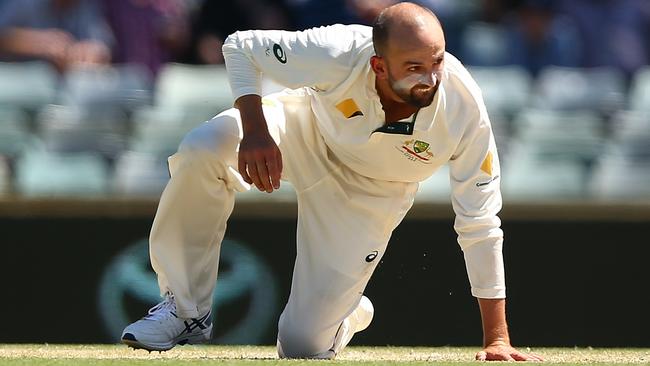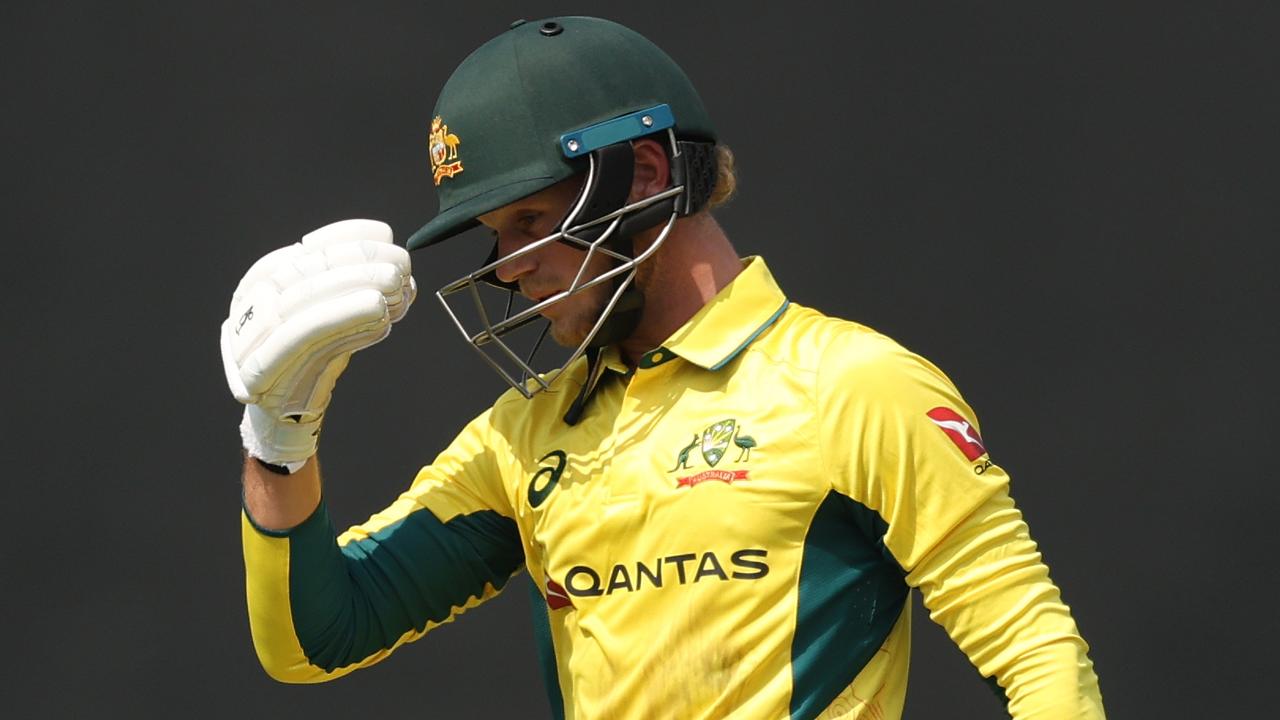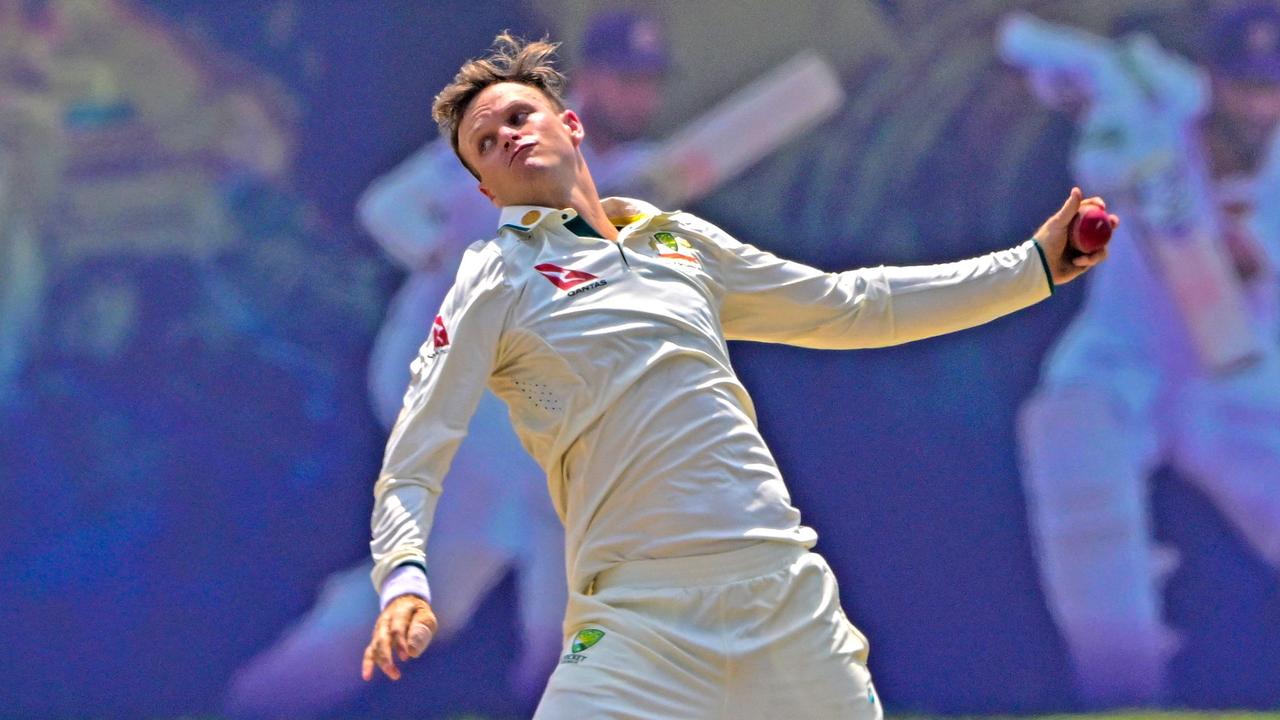Mellowed WACA pitch is good news for Marsh
The legend of the fastest wicket in the world lingers still, but the WACA Ground has become a batsman’s friend.

The legend of the fastest wicket in the world lingers still, but the WACA Ground has become a batsman’s friend, so much so that Australia coach Darren Lehmann gave his strongest indication yet that Mitchell Marsh would play in the third Ashes Test.
The only spin intrusion on the otherwise all-pace list of the top 20 most successful bowlers at the WACA is that of offie Bruce Yardley and as a WA local, he clearly must have had inside information.
But the reality is that the ground that produced that epic greentop Gillette Cup final of 1976 between Western Australia and Queensland — the one that coined the phrase “Queensland, glorious one day, all out for 62 the next” as they chased WA’s measly 77 — has now become the mellowest of tracks for batsmen.
In the three Tests played in Perth since 2013, including the last Ashes contest there, 4417 runs have been scored across 12 innings by Australia, England, New Zealand and South Africa — an average innings total of 368. NZ reached 624, Australia and the Proteas 500-plus as the bowlers bent their backs, broke their backs, for scant reward.
Curator Matthew Page is doing his best to bring the strip back to its boisterous best but Lehmann, a frequent watcher on the internet of that legendary Gillette Cup match, indicated that he now was taking pre-match promises of prodigious bounce and carry with just a grain of salt.
“They said it’s going to have some pace and bounce in it, a bit like the old WACA,” said Lehmann. “It’s always difficult, isn’t it. Hopefully he (Page) gets it right.”
Ironically, it will work in a West Australian’s favour if the Perth wicket is as flat as it has been so far this Sheffield Shield season.
If there are any doubts that the three Australian quicks, Mitchell Starc, Josh Hazlewood and Pat Cummins, and offspinner Nathan Lyon can get the job done, or at least get it done without exhausting themselves for the remainder of the summer, then allrounder Marsh will return to the side for the first time since the Indian tour in March.
“He’s surprised by bowling a couple of games ago … he surprised us (the selectors) as well, to be perfectly honest,” said Lehmann. “His batting has been exceptional all summer and he’s led from the front as a captain. He deserves his chance. Other people might be unlucky to miss out if Mitchell fills the role we need for this particular Test match.”
The “unlucky” person in this case will be Peter Handscomb, who was so ill at ease at the crease in Adelaide that he seemed to be overhauling his technique mid-match. That might have worked dramatically for Steve Smith, ironically in the Ashes Test of 2013 in Perth, but Handscomb didn’t look like a man having an epiphany during his innings of 12 last week and the fear is he — and his Test average of 47.35 — could well be discarded.
So well has Lyon been doing his job not just of drying up the runs but also taking wickets — he is, in fact, the leading Test wicket-taker in the world this year, with 57 — that Smith has developed the confidence to bowl him from one end while rotating the three quicks from the other.
But that might not be such a fruitful tactic this week. The WACA is Lyon’s least successful Australian Test venue, yielding him only 12 wickets at 50.33 across four Tests, basically double what he “pays” for them in Adelaide and Brisbane.
He has only two 0-100 innings in all his 71 Tests, and both of them have been in Perth and both against South Africa — 0-128 off 22 overs in November 2012, 0-146 off 34 overs four years later. Both curiously were in the second innings, when spinners — especially spinners of his quality — are more likely to shine.
The good news, though, is that Hazlewood has shaken off his sluggish start to the Test series, which may in fact have simply been a case of not playing as many warm-up games as he needed.
But in his second innings in Adelaide, it was his final-day spell that triggered the England collapse and significantly his average match bowling speed of 142km/h was his fastest in three years.
Like Hazlewood, Cummins, too, has taken “only” seven wicket in the series but conspicuously has bowled without luck. Yet it has been his batting that has been every bit as impressive as what he is doing with the ball. In his last six Test innings he has raised his highest score from 25, to 33 not out, to 42 and then 44 and in defence he looks as solid and composed as any top-order batsman.
At the moment he is running neck-and-neck with both elements of his game, with his batting accounting for 207 runs at 25.88 and his bowling 28 wickets at 25.96.
But the very real expectation is that his batting numbers will rise — arguably to the point where he might feel justified asking for a promotion up to the order, at least to eight — while his bowling average will fall.



